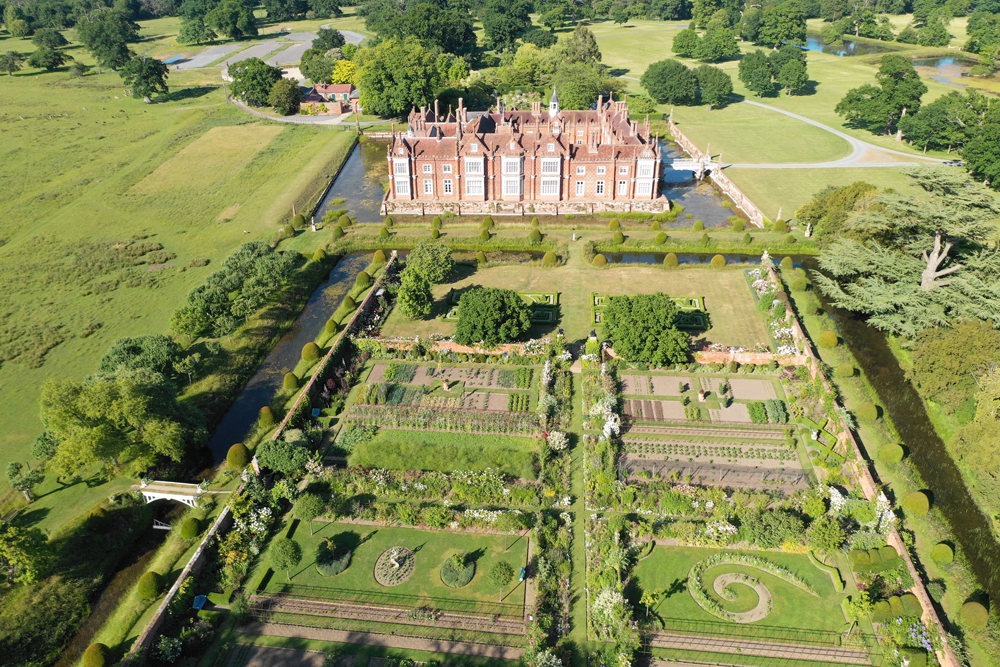A notable part of the Helmingham estate, and probably its biggest visitor attraction, are the award-winning formal gardens. The warmer days of late spring see them burst into life and the greys and browns of winter become a myriad of vibrant colours. This affords the opportunity to take off the long lens, used predominantly for photographing the wildlife in the deer park, and get the wide angle and macro/close focus lenses out of the camera bag.
The main garden lies to the west of the Hall, extending from the moat through a small open area then into a walled flower and vegetable garden, with a wildflower meadow beyond. The wall is about 3 metres high, so casts a shadow, and the whole area is protected with estate fencing to keep the deer out. Otherwise it would be devastated in no time at all!
I make no claims to be a garden photography expert but the same principles with composition, light etc. apply as when photographing anything else. Working with close focal distances and care with aperture selection and depth of field allow me to photograph this relatively small space, giving me both a sense of place and variety through the images.

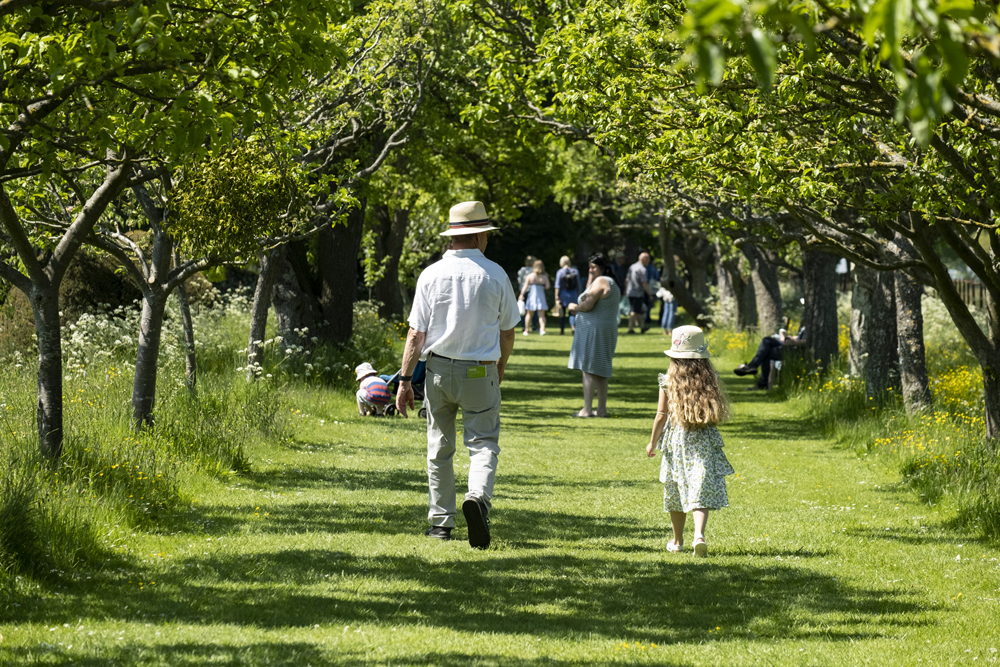

Wider views within this space are limited – it is a comparatively small area and sectioned by its planting layout, often using relatively tall partitions and arches to divide the space. It is also full, and I mean full, of planting so tighter shots and closer shot are usually visually more striking. The wider ones serve little more than to give a sense of place, but it is important to have these too, otherwise the closer shots could be in any planted garden, or even some allotments.


Using the drone is an effective way to establish and illustrate where and how the garden area sits within the estate. It also gives an idea of size, shape and orientation. This shot (right) was taken in June about four hours before sunset with the summer sunlight coming approximately from the west. In the morning the shadows will be reversed.
On ground level the views are limited. The two main options are along the central path or across the garden through one of the arched walkways. These shots are relatively easy but the viewer is left to imagine the heavily scented air and the sounds of birdsong and bees humming. It’s just a shame the images can do no more than hint at the sounds and, particularly, the smells of the garden.


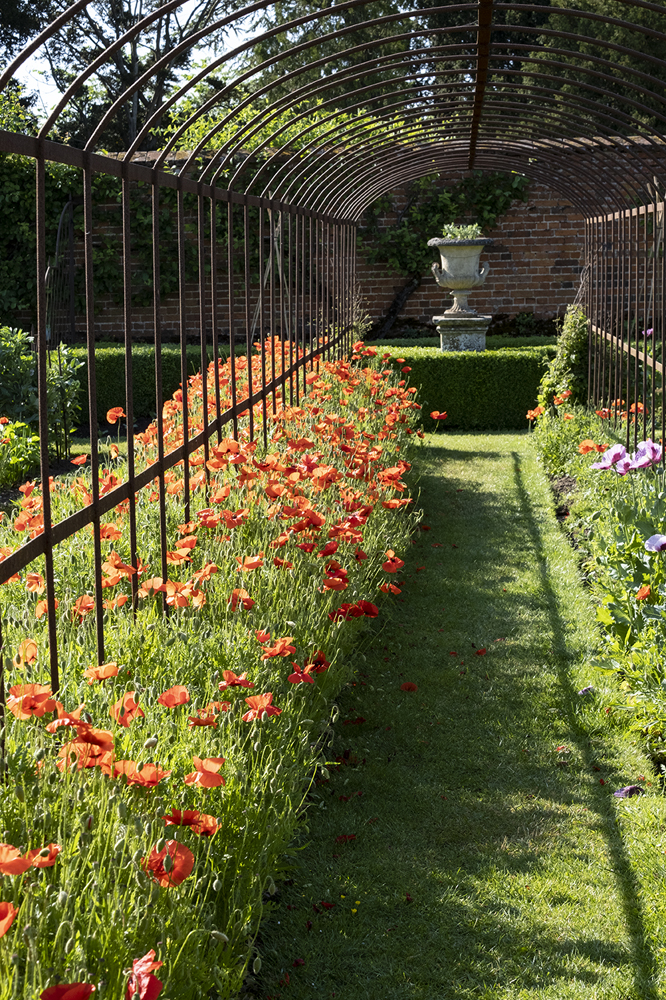

Returning to the colours, I chose tighter views to show smaller sections of the gardens and close ups to play with colours, juxtapositions and the fascinating detailed structures of the flora and fauna. Depth of field is a powerful tool in doing this; using limited sharp focus with softer out of focus to delineate between and emphasise one colour or structure from another. This approach increases the emphasis and draws the eye to the sharp focus elements in the frame, whilst at the same time pushing the softer, less defined ones into a supporting role within the composition. It’s a technique which can be used to great effect in many genres of photography – portraiture is a good example – where isolating the main subject from a complex or confusing background is the objective.
One note of caution when using narrow depth of field to isolate and add emphasis to a subject; it rarely works well if you have a lot of foreground blur. In other words, if the focal point is set well back in the frame. In general, it is far more effective if the point of sharp focus is nearer the front of the frame or composition. This is because strong compositions tend to depend on more than just focus to work optimally.
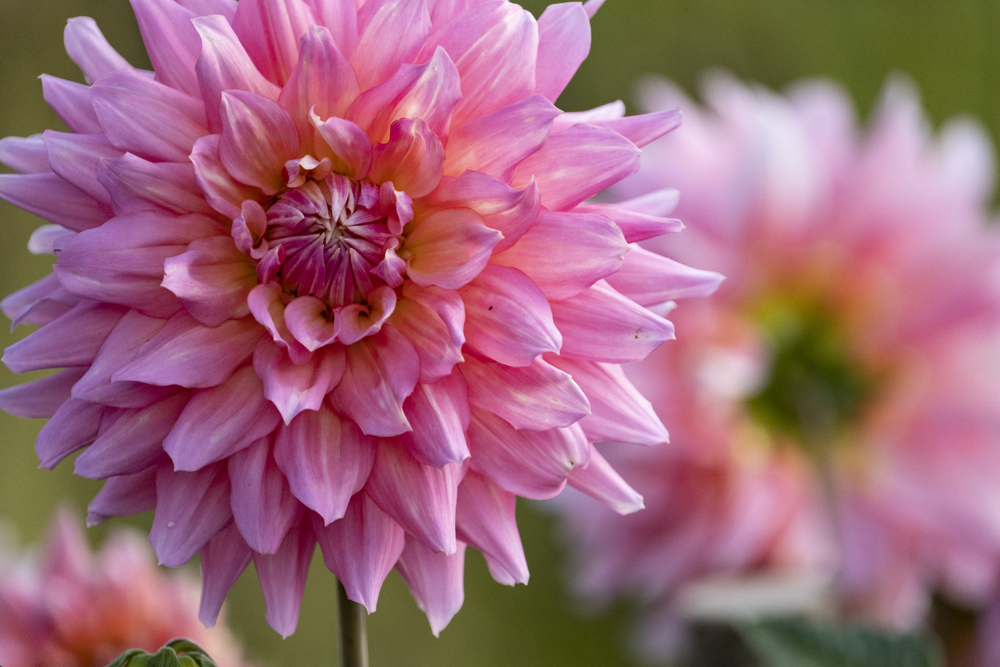
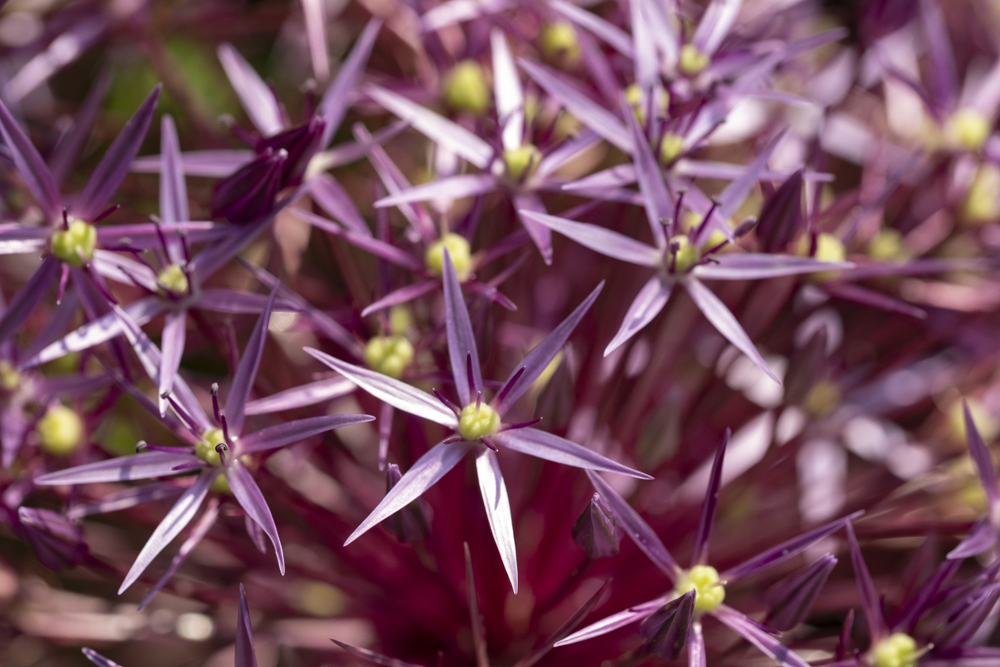

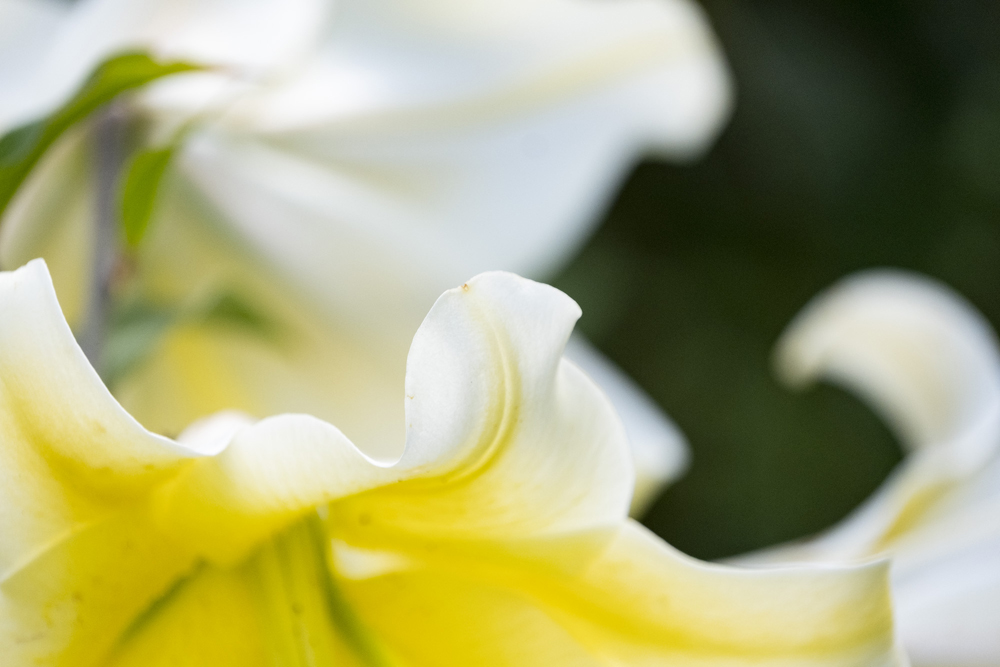
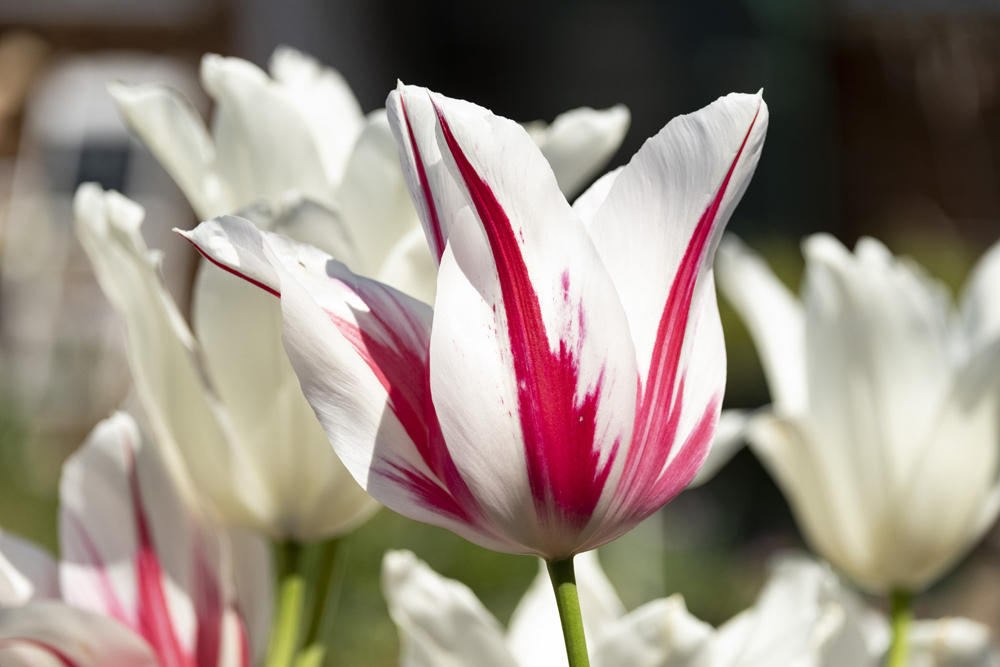
Within any space like this there is life beyond the plants. Bees, butterflies and birds are all notable examples. For the first two, getting close works best and gives a strong feel and fit to a visual story as they are a vital part of the garden’s eco-system. For the birds, getting close is almost impossible because they are more timid, and even if you do manage to, you’d have to be very quick to capture them. For them, the long lens comes back out and quiet, patient sitting and waiting gives them the confidence to come within range of an effective picture.
Photographing the garden is a very different proposition and experience from photographing in the deer park. If I were living on site I would be waiting for the deer to get used to me and come towards me, but when trying to shoot this project in a number of short visits I have to search much more for the right opportunities in the right light. In the garden, virtually everything is there waiting for me so I just have to time my visits for the best light and peak floral displays.
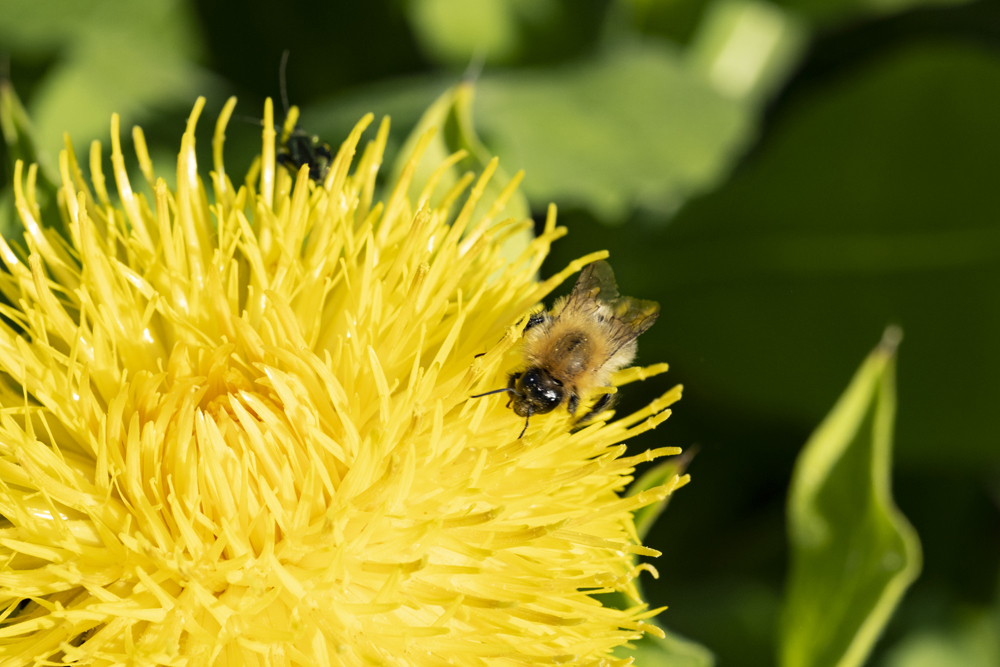
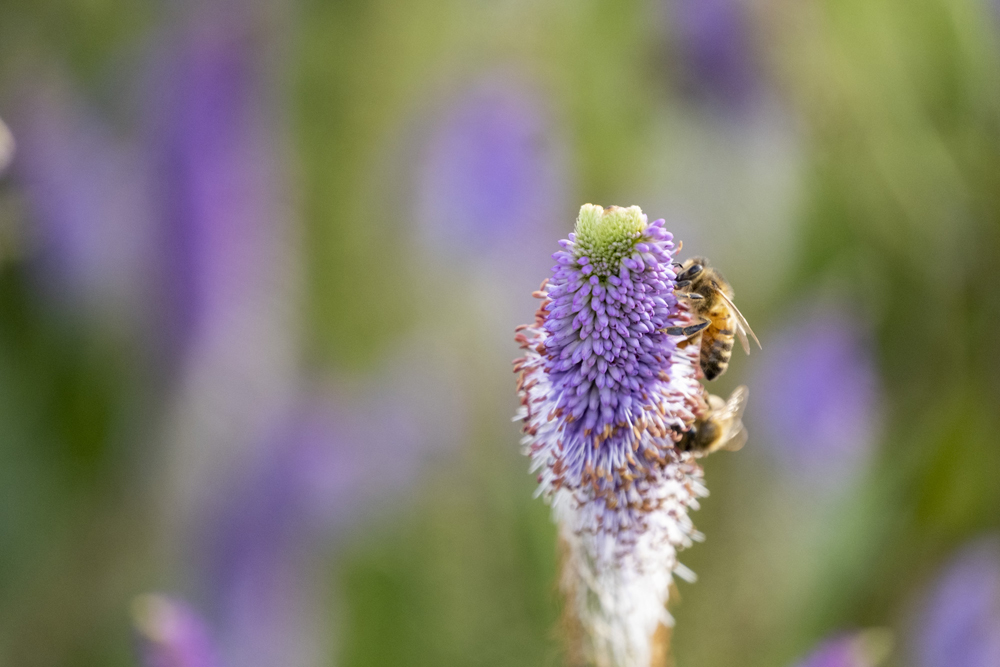
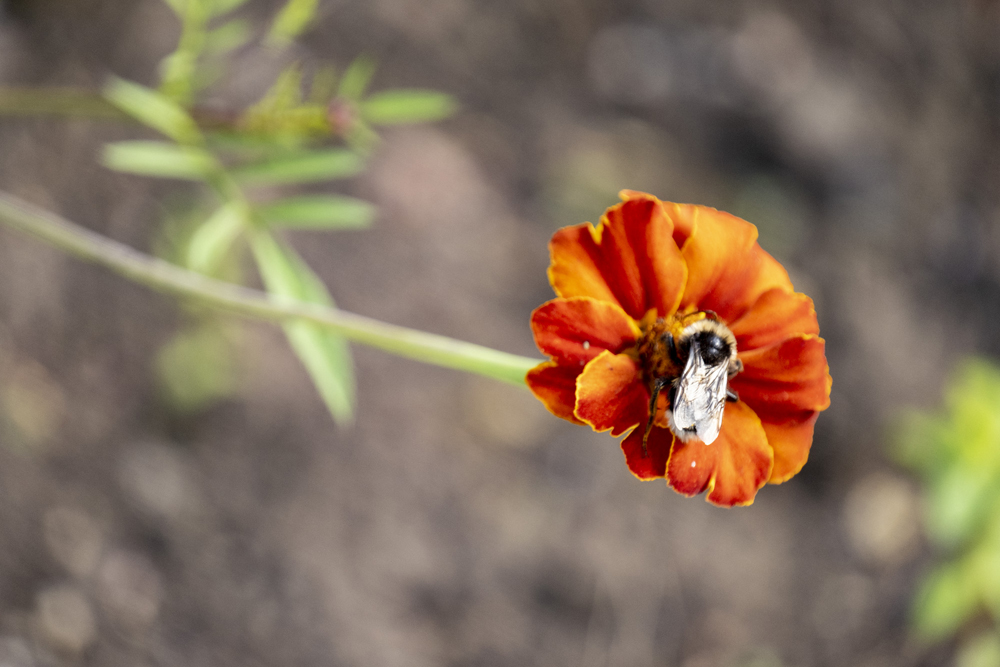
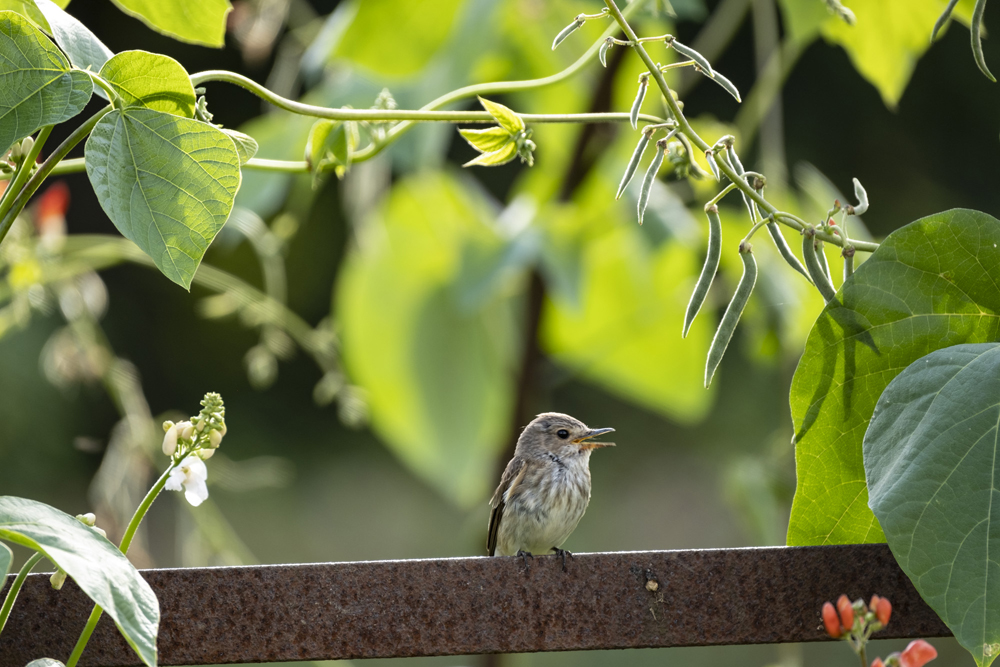

Something which is becoming increasingly obvious to me as I progress through this project is that a photographer needs to be at least semi-resident at a location like this for periods to really get the best shots. A few hours per visit, even if the visits are regular, still leaves a large element to luck. As a photographer, by understanding the light and how it changes in a particular setting, and most importantly by understanding the wildlife’s behaviour, I can give myself a decent chance to get good shots but this is still sprinkled with a sizeable percentage of luck.
In the next instalment I’ll be back in the deer park as the transition into summer sees the arrival of the fawns.

